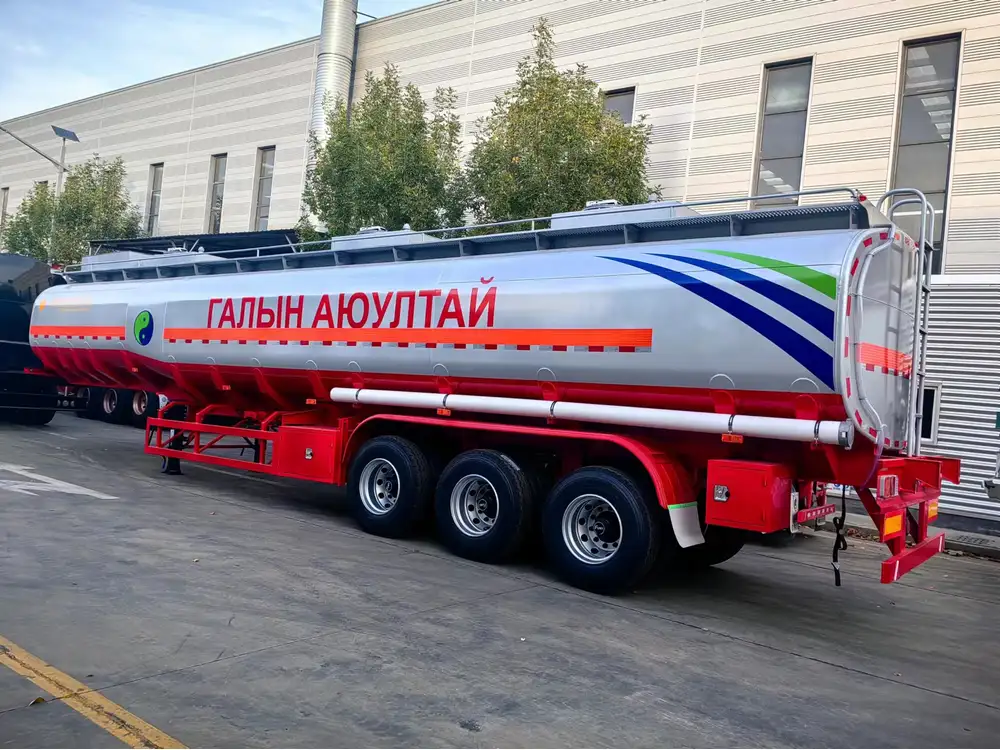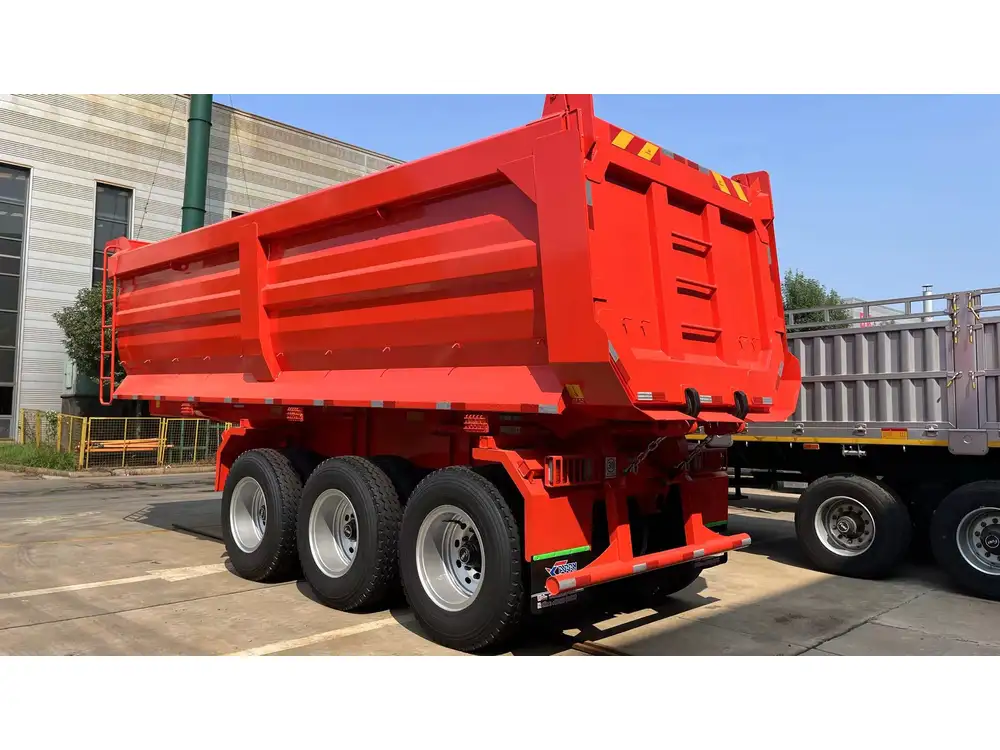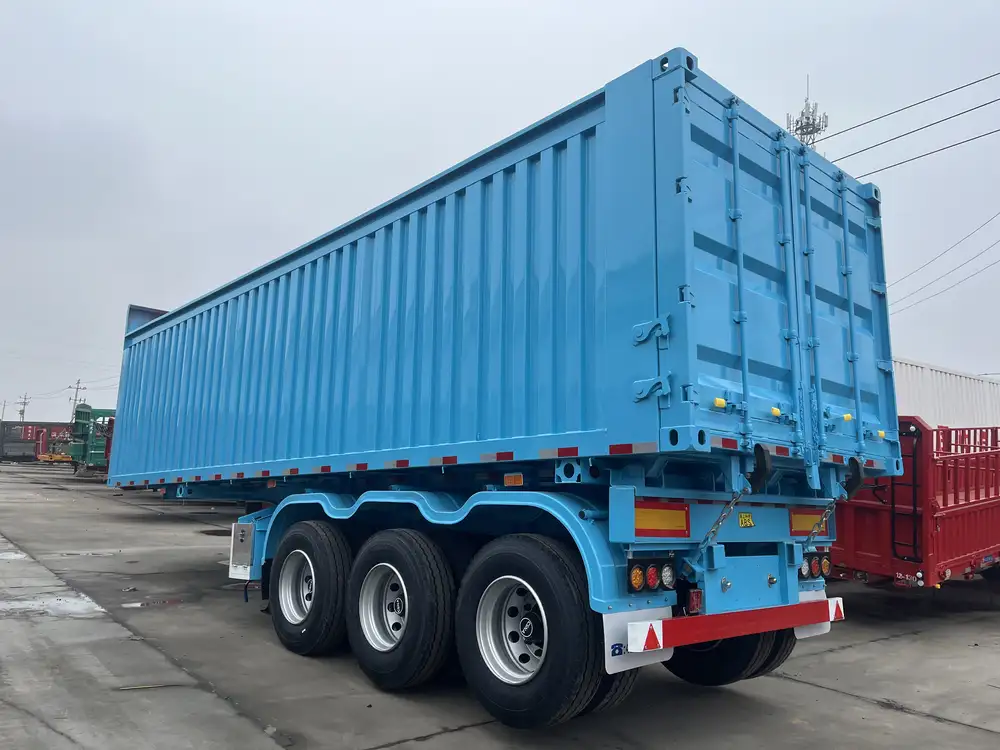When it comes to logistics and transportation, understanding the specifications of semi-trailers is essential for efficiency and cost-effectiveness. One frequently asked question arises regarding the number of tires that can fit in a semi-trailer. This inquiry is not just a matter of curiosity; it’s an essential topic that impacts load capacity, weight distribution, and safety on the road.
Understanding Semi-Trailers and Tire Specifications
To address the central question of how many tires fit in a semi-trailer, one must first consider the various types of semi-trailers used in the freight industry. The design and configuration of these trailers dictate not only their load capacity but also the number of wheels required for optimal performance.
Types of Semi-Trailers
Flatbed Trailers: Primarily used for transporting large and heavy items. They usually have two axles and can support up to 16 wheels.
Van Trailers: Enclosed trailers that protect cargo from the elements. They also commonly feature two axles, accommodating between 8 to 12 tires depending on the length and design.
Reefer Trailers: Temperature-controlled trailers used for perishable goods. Like van trailers, they typically have two axles, allowing for 8 to 12 tires.
Tanker Trailers: Designed to transport liquids, these trailers can vary in design but generally have either two or three axles, resulting in 6 to 12 tires.

Standard Tire Specifications
The tire size used for semi-trailers typically falls under the designation of 11R22.5 or 275/80R22.5. Understanding the dimensions and specifications of these tires is crucial, as it affects the load-bearing capacity of the trailer and impacts maintenance schedules.
Common Configurations
Here’s a quick breakdown of some common configurations:
| Trailer Type | Axles | Typical Tire Count |
|---|---|---|
| Flatbed | 2 | 8-16 |
| Van | 2 | 8-12 |
| Reefer | 2 | 8-12 |
| Tanker | 2-3 | 6-12 |
| Specialized Equipment | 2-4 | 8-20 |
Tire Count by Axle Configuration
Tire count directly correlates with the number of axles:
- Single Axle: 4 tires
- Dual Axle: 8 tires
- Triple Axle: 12 tires
- Quad Axle: 16 tires
In larger semi-trailer configurations, additional axles (up to 5 or more) can lead to a total of 20 or more tires. This wide variance illustrates that the number of tires fitting in a semi-trailer is highly dependent on its intended use and legal regulations governing axle and tire limits.

Legal Regulations and Their Impact
In the United States and many other jurisdictions, legal regulations dictate the number of axles and, by extension, tires that can be used based on gross vehicle weight (GVW). The Federal Highway Administration outlines these regulations to ensure safety and prevent excessive road wear.
- Federal Limits: Governed by the bridge law, which considers both the number of axles and the distance between them.
- State Regulations: Vary by state and can affect weight limits, requiring different tire arrangements to comply.
Weight Distribution Concerns
Proper weight distribution across tires is essential for both safety and efficiency. Overloading any axle can lead to premature tire wear, decreased fuel efficiency, and increased risk of accidents. It is recommended to regularly inspect tire conditions and maintain proper air pressure to optimize performance and safety.
FAQs on Semi Trailer Tire Capacity

1. How do I calculate the number of tires needed for a specific load?
To calculate the tire count required for a specific load, consider the following factors:
- Load Weight: The total weight of the cargo.
- Trailer Configuration: Determine the type of trailer (multiple axle configurations may affect the number of tires).
- Legal Weight Limits: Refer to local regulations to ensure compliance.
2. Can I use larger tires on my semi-trailer to increase load capacity?
While larger tires may provide a slight increase in load capacity, they must remain compliant with regulatory guidelines. Always consult with a tire or trailer specialist before making changes.
3. What maintenance routines can help extend tire lifespan?
Regular maintenance practices include:
- Checking and maintaining proper air pressure.
- Rotating tires to ensure even wear.
- Inspecting tread depth and replacing worn-out tires promptly.
- Balancing and aligning wheels to prevent uneven wear.

4. What are the implications of overloading a semi-trailer?
Overloading can lead to several perilous outcomes, such as:
- Increased tire wear leading to potential blowouts.
- Strain on braking systems, diminishing their effectiveness.
- Legal penalties for weight violations.
- Damage to road surfaces over time.
The Importance of Choosing the Right Tires
Choosing the right tires for your semi-trailer is crucial not just for compliance, but also for enhancing safety, reducing operating costs, and improving fuel efficiency. Consider factors such as tread design, load rating, and suitable weather conditions (like all-season vs. winter tires).
Tire Selection Factors
| Factor | Consideration |
|---|---|
| Load Rating | Ensure it meets or exceeds load requirements. |
| Tread Pattern | Choose appropriate tread for specific terrain. |
| Brand Reputation | Opt for brands known for reliability and quality. |
| Fuel Efficiency | Consider low-resistance tires to optimize fuel economy. |

Conclusion
Understanding how many tires fit in a semi-trailer is essential knowledge for operators and manufacturers alike. This guide has outlined the key factors affecting tire capacity, the regulations surrounding them, and the implications of choosing the correct tire setups. From load calculations to maintenance tips, being informed empowers operators to improve safety, enhance efficiency, and ultimately lower operational costs.
Call to Action
For semi-trailer manufacturers and owners, utilizing this information can facilitate better decision-making when it comes to tire selection and trailer design. By being proactive and well-informed, you can optimize your trailer’s performance and longevity, ensuring that your freight operations run smoothly and efficiently.
In summary, you now have a robust understanding of the complexities surrounding tire count in semi-trailers. Implement these best practices and stay informed to ensure your operations remain competitive in an ever-changing logistics landscape.



